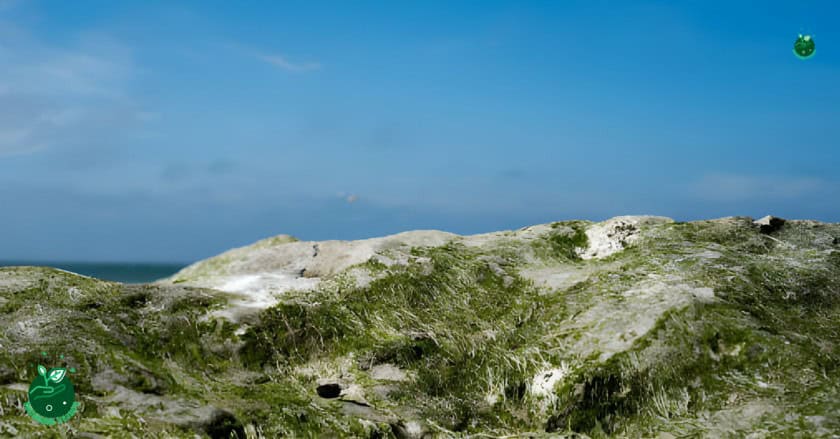Table of Contents
Are you wandering how does biodiversity contribute to the economy? Yes, Biodiversity contributes to the economy in various ways.
It provides essential ecosystem services such as food production, soil fertility, pollination, pest control, nutrient provision, genetic diversity, and disease prevention, which are vital for agriculture, forestry, and fisheries.
Biodiversity and healthy ecosystems provide tremendous—yet often overlooked—economic value. I learned this powerful lesson firsthand when habitat loss from nearby construction decimated native bee populations and crop yields on my family’s orchard.
Only by restoring wildflower meadows and nesting areas to attract diverse pollinators did our harvests rebound through nature’s resilience.
This experience revealed a deep truth: economic prosperity fundamentally relies on biodiversity.
In the following article, I promise to clearly explain the many ways species and habitat diversity underpin vital sectors like agriculture, enable emerging industries like biomimicry, and provide essential services worth trillions annually that support businesses and communities worldwide.
Let’s explore why conserving biodiversity equals investing in our shared future.
Biodiversity 101
Before diving in, let’s clearly define what we mean by biodiversity. Put simply, biodiversity or biological diversity refers to the variety of plant and animal life on Earth, including:
- Genetic diversity – the genetic variation within a species
- Species diversity – the total number and abundance of species
- Ecosystem diversity – the variety of habitats and ecological communities
This includes diversity within species, between species, and across ecosystems from rainforests to coral reefs. And the scale is almost unimaginably vast—scientists have catalogued over 1.9 million species, with many more yet to be discovered.
Every element of this complex web of life has intrinsic value and a role to play. And together, healthy biodiverse ecosystems provide humanity with a multitude of services and economic benefits that we often take for granted.
Now let’s examine some of the key ways biodiversity powers our global economy and supports jobs, businesses, trade, and improved livelihoods across many sectors.
How Does Biodiversity Contribute To The Economy
Biodiversity Underpins Vital Economic Sectors
Many of the world’s largest and most vital industries including agriculture, forestry, and fishing fundamentally rely on biodiversity and healthy, functioning ecosystems to thrive. Declining biodiversity can place a major strain on these sectors and reduce productivity over time.
- Agriculture Depends on Genetic Crop Diversity
- Forestry Relies on Diverse Tree Species
- Fishing Connected to Aquatic Ecosystem Health
Agriculture Depends on Genetic Crop Diversity
The global food production system that fuels the agriculture industry depends on continued access to a wide variety of crops and extensive genetic diversity within those crops.
This crop diversity, developed over thousands of years of cultivation, breeding, and adaptation, provides the genetic foundation for vital characteristics like pest and disease resistance, climate resilience, flavor, and nutritional value.
For example, genes found in wild relatives of domestic crops continue to be bred into modern varieties of wheat, rice, and potatoes when existing traits limit production due to changing conditions.
This ongoing crop improvement depends on conserving the biodiversity found in seed banks and ancestral wild populations.
The value of these genetic resources to sustainable agriculture is enormous, estimated to be worth over $120 billion per year globally.
So preserving diverse heritage seeds and crop wild relatives is crucial for breeding initiatives to boost yields, incomes, and food security into the future, especially considering crops will need to adapt to climate change.
Forestry Relies on Diverse Tree Species
The global forestry industry also fundamentally depends on biodiversity within forests, harnessing a variety of native tree species for products like timber, paper, fuelwood and rubber.
This industry valued around $463 billion annually requires maintaining genetic diversity within harvested tree species to sustain health and productivity in the face of evolving pests, pathogens and climate shifts.
Diverse forests with a mix of species also tend to have greater stability and resilience to changing conditions versus monoculture plantations.
Unfortunately, nearly a third of forests worldwide are now planted monocultures of fast-growing non-native trees. Protecting remaining native forests is crucial for the economy, local jobs, trade, and ecological stability.
Fishing Connected to Aquatic Ecosystem Health
Wild fisheries worth over $150 billion annually also rely directly on healthy biodiverse aquatic ecosystems like mangroves, seagrass meadows, and coral reefs to supply key breeding and nursing grounds.
These habitats provide shelter and food sources that support diverse fish stocks and underpin commercial and artisanal fishing livelihoods around the world.
Almost half the world’s fisheries are now considered overexploited—so maintaining ecosystem health is crucial for this sector.
Therefore, declining biodiversity and collapsing populations of species like cod, tuna, and groupers threaten the sustainability of many local economies and food sources.
Improving monitoring and protection for critical ocean and freshwater ecosystems needs to be part of management plans to preserve diverse aquatic life.
Biodiversity Provides Critical Ecosystem Services
In addition to supporting major industries, biodiversity and the complex workings of ecosystems provide humanity with a multitude of essential ‘services’ like pollination, clean air and water, fertile soils, and medicines. These undervalued contributions are worth trillions globally.
Pollination Enables Food Production
Crops ranging from apples to broccoli rely on bees, butterflies, bats, and other animal pollinators to produce fruit and seeds.
About 75% of leading global food crops benefit from animal pollination, helping to generate over $570 billion worth of produce annually. Declining insect populations put this productivity and the global food supply at risk.
Protecting pollinator health and habitat is crucial, but still lacks economics incentives in most countries. Paying farmers to plant wildflower habitat on unused land or implementing “polluter pays” style pesticide taxes could help reflect the huge economic contribution of pollination services from healthy ecosystems.
Healthy Watersheds Prevent Floods and Drought
Natural ecosystems like forests, floodplains and wetlands play a vital role in managing water flows and quality across landscapes.
Plant roots and permeable soils act like sponges to capture rainfall then slowly release it into streams and groundwater. This regulation prevents floods during heavy rain and maintains flows during dry periods to prevent droughts.
Reconnecting rivers to floodplains and protecting watershed vegetation are two cost-effective ways to invest in natural infrastructure versus expensive dams and reservoirs.
These nature-based solutions provide cost savings and additional benefits like habitat, timber and recreation.
Coastal Ecosystems Reduce Storm Damage

Mangroves, salt marshes, seagrass meadows and coral reefs offer invaluable protective buffering against tropical storms, erosion and flooding for inland areas.
These natural coastal defenses provide more than $250 billion in flood protection benefits each year—mitigating risks to communities and savings on constructed barriers like sea walls or levees.
Unfortunately, over a third of mangroves and coral reefs have been lost globally, eroding these protective services and requiring ever more expensive infrastructure spending to defend coastal developments.
Wiser planning and investment in ecosystem restoration makes economic sense to reduce physical climate risk exposure.
| Ecosystem Service | Estimated Annual Value |
|---|---|
| Crop Pollination | $235 billion-$577 billion |
| Flood Mitigation | $96 billion-$2,900 billion |
| Fisheries | $274 billion |
As seen in the table above, natural ecosystems provide humanity with trillions of dollars in services each year that support economic activity and human wellbeing.
Yet due to development pressure and resource exploitation, many of these ecosystems are degraded—eroding the vital services they provide.
Targeted programs to quantify, monitor and reward the biodiversity elements that generate key services can help reflect their value in policy and spending decisions.
For example, investing in mangrove restoration to maintain storm buffers or paying farmers to set aside wildflower habitat for pollinators.
Some governments have established dedicated funds resourced by taxes or fees on activities like water use or infrastructure development to help manage ecosystems for long-term returns across society. For instance, dedicating revenues from tourism user fees towards habitat conservation in national parks.
Biodiversity Supports Emerging Green Industries
In addition to underpinning major global economic sectors and providing essential ecosystem services, biodiversity also enables emerging green industries looking to commercialize nature’s marvels.
Growing consumer demand for natural products and greener alternatives that reduce environmental impacts is supporting these markets.
Pharmaceutical Companies Use Genetic Resources
The world’s biodiversity provides an incredible library of chemical compounds and genetic resources that form the basis of new pharmaceuticals, biotechnology research, crop breeding initiatives, and cosmetic ingredients. This “bioprospecting” by companies in search of useful natural traits or DNA is now a multi-billion dollar industry.
For example, a leukemia drug derived from the rosy periwinkle plant generates over $100 million in annual revenue. While papain enzymes from papaya plants play an instrumental role in developing new meat substitutes by plant-based food companies.
Equitable policies and agreements are still needed in many regions to ensure benefits from commercializing these genetic resources are shared with indigenous caretakers.
Biomimicry Innovations Inspired by Nature
A fascinating new field called biomimicry looks to nature’s designs, systems and processes to find inspired solutions to human challenges around topics like energy, materials, medicine and computing.
This approach has already produced highly successful applications like Velcro fasteners inspired by sticky burr plants or efficient wind turbine blades modeled after humpback whale fins.
Studying biodiverse organisms has vast potential for developing beneficial new products and processes for many industries worth billions.
Consequently, maintaining Earth’s biodiversity expands the innovation pipeline by revealing millions of years of natural R&D solutions. It offers prospects for a more sustainable bio-based circular economy.
Eco-Tourism Based on Iconic Landscapes & Wildlife
Thriving biodiversity also provides the iconic landscapes, forests, coral reefs andcharismatic fauna that support nature-based tourism.
Wildlife safaris, birdwatching, sport fishing and adventure ecotourism like rafting or whale watching all depend on exceptional natural places and healthy ecosystems.
This growing tourism niche was worth approximately $120 billion before the COVID-19 pandemic—supporting 10% of all tourism jobs.
Conservation incentives funded by visitor fees or hotel taxes help ensure protected areas deliver returns via wildlife sightings and breathtaking vistas that attract tourists. The market can incentivize habitat conservation from the Amazon to the Arctic.
Arguments for Protecting Biodiversity
Given biodiversity’s vast contributions to economic activity, jobs and human prosperity on multiple fronts, arguments for investing in its protection and sustainable use are compelling from purely financial perspectives.
However there are also strong ecological, social and moral cases as well.
Moral Reasons to Protect Other Species
Firstly, conserving the planet’s biodiversity and preventing further extinction of remarkable wild species and ecosystems is undoubtedly an ethical obligation.
Allowing iconic species like elephants, pandas, whales, orchids or sequoia trees to disappear forever would represent a profound, irreversible loss to global natural heritage.
Preserving biodiverse lifeforms, besides holding intrinsic and aesthetic value, also maintains evolutionary potential and the resilience of ecological communities to withstand change over time.
These systems have nurtured human civilizations, so we have a duty to be wise stewards and prevent needless, permanent biodiversity erosion.
Preventing Biodiversity Declines Saves Money
Secondly, allowing biodiversity loss and ecosystem degradation to continue unchecked will likely incur substantial economic costs over the long term as vital services erode.
For example, losing natural coastal protection from mangroves, seagrass and reefs means spending more on concrete sea walls and levees to achieve the same risk reduction—often less effectively.
Strategic projects to restore or expand critical habitats like wetlands, forests, and grasslands helps avoid future maintenance expenses down the road after degradation.
So taking preventative measures now through conservation investments and smarter land use planning saves public money over time.
Building Resilience to Shocks
Thirdly, maintaining diversity within ecosystems and multiple redundant species bolsters overall resilience to unexpected shocks like new invasive pests, pathogens, extreme weather events or shifting climate patterns. Diverse biological communities have more tools to adapt and stabilize functionality when facing disturbances.
Conversely, simplified landscapes are more prone to catastrophic crop failures or fishery collapses since they lack complex feedback loops and backups.
For instance, planting genetically uniform tree plantations leaves forests vulnerable if a novel fungus emerges. Whereas biodiverse natural forests have higher resistance across a mosaic of species.
In a world facing rising instability, managing ecosystems for richness and redundancy provides insurance for sustaining economic activities reliant on consistent biological resource flows and services over time.
Biodiversity Economic Incentives & Policy Reforms
Given biodiversity’s proven value to economic productivity and sustainability, governments, businesses and communities stand to benefit greatly from policy reforms and mechanisms that encourage its conservation, restoration and sustainable use.
Payments for Ecosystem Services Schemes
One promising mechanism is payments for ecosystem services (or PES) programs that provide direct incentives to landholders to manage habitats for public benefits.
For example, downstream towns pay upstream farmers/foresters to restrict livestock access, restore riverside forests or alter cropping patterns to maintain water quality, regulate flooding risks, and support fisheries.
Well-designed PES schemes around the world are successfully achieving win-win biodiversity, community, and budget outcomes.
Costa Rica pioneered this financial approach in the 1990s to reduce deforestation and enjoys eco-tourism benefits too. Global funding for PES exceeds $36 billion currently but needs to scale up further.
Dedicated “biodiversity offsets”—habitat restoration projects funded by developers to counterbalance unavoidable damage—can also help guide infrastructure and industry investments towards overall positive impacts.
Applied thoughtfully, biodiversity offsetting fosters conservation economies and sustainable land use planning.
Reforming Subsidies that Harm Biodiversity
Reforming longstanding agricultural, forestry, fuel and fisheries subsidies that incentivize habitat destruction or unsustainable resource use in favor of payments explicitly supporting ecosystem stewardship can transform biodiversity fortunes too.
Perverse subsidies worth over half a trillion dollars annually often encourage inefficient, polluting industries and activities that degrade natural systems.
Phasing these out and re-routing funds to benefit local communities protecting ecosystems pivots economic forces towards restoration and sustainability.
For example, in the EU and Japan, former subsidies that encouraged overfishing have successfully been redirected to reduce fleet sizes, buy out licenses, implement smarter gear, and support fisher livelihood transitions—allowing fish stocks and aquatic food webs to partially recover. This improves long term catch sustainability and profits.
Expanding Protected Areas
Likewise, increasing public and private investment in expanding protected area networks helps secure critical water catchments, carbon stocks and biodiversity strongholds like primary forests and coral reefs for current and future generations.
Over $24 billion is invested into protected areas globally each year—delivering healthy returns via nature-based tourism, improved crop resilience on nearby farms and reduced disaster recovery costs.
Still, less than 20% of land and 7% of oceans are formally protected presently, missing science-based coverage targets. Work is needed to grow conservation area networks, implement thoughtful zoning plans, provide fair compensation where necessary, and increase funding from visitor fees, offsets and government budgets.
Effective management of protected areas and parks to balance recreation, working lands and strict biodiversity refuges is also vital to durably secure threatened habitats and wildlife populations over time.
Well-funded, equitably governed protected areas provide lifeline strongholds for endangered species and ecosystems while sustaining local jobs and businesses through recreation, renewable harvesting, carbon financing and high-value products like sustainable wild coffee or botanical extracts.
The Role of Business & Consumers
In addition to policy reforms, businesses and consumers also have an increasingly vital role to play in stemming biodiversity declines worldwide through their purchasing choices, supply chain management and corporate disclosures.
Certified Sustainable Product Standards
Growing consumer demand for credibly certified sustainable agricultural and seafood products allows discerning buyers to directly incentivize biodiversity-friendly farming systems like agroforestry coffee plantations or Marine Stewardship Council certified fisheries. Preference for Forest Stewardship Council (FSC) lumber similarly helps protect intact forests.
Global markets for certified goods now account for 15% of wild caught seafood ($14 billion) and 10% of tropical wood products—driving positive shifts towards regenerative production models that benefit both ecosystems and producer livelihoods.
Corporate Commitments to Sustainable Supply Chains
Leading retailers, manufacturers and hospitality firms are also establishing voluntary policies to eliminate products linked to tropical deforestation and habitat destruction from their complex global supply chains for commodities like palm oil, soy, beef, leather, cocoa and timber.
These commitments help protect high carbon, high biodiversity forests and grasslands that support iconic wildlife and rural communities.
Over 470 major companies with combined annual revenues over $4 trillion have now made “No Deforestation” pledges to help clean up their supply chains.
Strong implementation, transparent monitoring and scaling complementary financial incentives for producers and jurisdictions to maintain standing forests are still needed though.
Natural Capital Business Accounting
Finally, an emerging best practice is full-cost “natural capital accounting” where firms calculate and disclose their total dependence and impact on nature across operations and supply chains when reporting financial performance.
This holistic perspective exposes material risks like water scarcity or pollinator losses and spurs mitigation investments that reduce negative biodiversity footprints over time.
After piloting a biodiversity footprint analyzer, French cosmetic company L’Oréal uncovered 78% of its land-related impacts were beyond its direct control in sourcing regions—providing impetus to partner closely with suppliers on sustainable agriculture practices that benefit both ecosystems and crop resilience.
FAQs
Why Is Biodiversity Important To The Economy?
Biodiversity and healthy ecosystems provide tremendous economic value that often goes underappreciated. Key sectors like agriculture, forestry, and fisheries fundamentally depend on biodiversity to function productively.
These industries rely on genetic crop diversity, diverse tree species, and functioning aquatic habitats to thrive.
Biodiversity also enables vital pollination services, water regulation, coastal protection and other ecosystem services worth trillions annually.
Additionally, biodiversity provides genetic resources for biotechnology research and emerging sectors like ecotourism and biomimicry depend on functioning natural environments.
Considering all these benefits, preserving biodiversity is imperative for ensuring economic resilience and continued prosperity.
What Is The Direct Economic Value Of Biodiversity?
The direct economic value generated by biodiversity globally is estimated between $2-5 trillion per year when considering productive industries it underpins and critical ecosystem services it provides humanity like pollination, clean water, soil health, pest control and materials.
These benefits rival the GDPs of the world’s largest economies. Biodiversity’s contributions also enable most other economic activity through providing necessary food, water, climate regulation, cultural/recreational benefits and more.
What Does Biodiversity Contribute To Us?
Biodiversity contributes an array of essential goods and services to humanity that enable modern civilization to function and thrive. These include:
- Food production via crop pollination, pest control and genetic diversity for agriculture
- Clean air & water through natural filtration processes in ecosystems
- Flood and drought mitigation via water regulation in wetlands/forests
- Coastal protection through coral reefs, mangroves and barrier islands
- Soil fertility, erosion prevention and nutrient cycling
- Materials like wood, biomass fuels and plant-derived medicines
- Recreation/ecotourism opportunities from wildlife and iconic landscapes that support local economies
- Genetic resources & nature-inspired innovations valuable for research
- Cultural/spiritual enrichment & sense of wonder from interacting with nature
What Are 7 Reasons Why Biodiversity Is Important?
- Supports key economic sectors like agriculture, forestry and fishing
- Provides vital ecosystem services worth trillions yearly
- Generates genetic resources for biotechnology research
- Underpins emerging industries like ecotourism and biomimicry
- Strengthens ecosystem resilience to disturbances like pests and climate extremes
- Allows species and habitats to adapt to changing environmental conditions over time
- Provides aesthetic, recreational, cultural, spiritual value beyond economics
What 3 Things Contribute To Biodiversity?
The three primary factors that generate and sustain biodiversity are:
1) Ecological connectivity between habitats like forests, grasslands and wetlands that allows species migration and gene flow between populations. Fragmented habitats isolate species.
2) Environmental heterogeneity and variation in factors like soil types, elevation gradients and water availability across habitats and bioregions. This enables more ecological niches to evolve.
3) Climatic stability over longtime scales that gives ecosystems and organisms space to adapt to gradually changing conditions versus overly rapid fluctuations. This allows richer biodiversity to develop compared to frequently disrupted systems.
Which Is The Greatest Threat To Biodiversity?
The leading global threat to biodiversity today is accelerating habitat loss, fragmentation and ecosystem degradation driven primarily by expanding human land use activities for agriculture, settlements, resource extraction and infrastructure.
The pace of forest loss, wetland drainage, and grassland/riparian area conversion to farmland continues rising in hotspots like the Amazon, Southeast Asia, East Africa and beyond—erasing once intact ecosystems and reducing population gene pools.
Additional threats amplifying biodiversity declines include overexploitation/overharvesting, introduced invasive species, pollution and rapidly changing climatic conditions.
But nearly all these secondary threats link back to expanding human habitat modification and pressures on ecosystems beyond sustainability thresholds.
How Does Biodiversity Contribute To Stability?
Rich biodiversity where ecosystems contain many interacting species contributes to ecological stability and overall resilience to disturbances or changing environmental conditions over time.
The more species functioning together in complementary ways, the more redundancies exist to uphold system processes like water filtration, decomposition, and pollination if one element declines.
And diversity of connected habitats and elevation/moisture gradients provides avenues for organisms to migrate and complexes to reorganize dynamically after shifts like wildfires, floods or landslides.
Species diversity across genes, traits, and niches also furnishes raw adaptable material for evolution and change versus overly simplified systems prone to catastrophic collapse since fewer response options exist internally.
How Biodiversity Contributes To The Sustainability Of An Ecosystem?
Biodiversity enhances ecosystem sustainability and longevity in numerous ways. Greater species diversity allows more complex food webs and positive interconnections that cycle nutrients efficiently to support continued productivity without as much need for external inputs.
Higher genetic variation likewise permits species to adapt over generations to changing conditions and accumulating stressors.
This adaptive capacity combined with functional redundancies that provide backups when populations fluctuate bolsters an ecosystem’s resiliency to disturbance and capacity to reorganize into stable states following disruptions like droughts or heat waves that might flip less buffered ecosystems into wholly new regimes.
Finally, habitat heterogeneity and connectivity between diverse mosaics allows for migration pathways and varied microclimates that species and communities utilize to persist through difficult periods that overly fragmented homogeneous systems cannot withstand.
What Is The Most Important Cause Of Biodiversity?
While natural evolutionary and geologic processes produced Earth’s grandeur biodiversity over billions of years, the ultimate driver for generating singular richness is the living system itself.
Positive biotic feedback and interdependencies between organisms and dynamic habitats they co-create amplifies complexity and diversity over time.
For example, flowering plants coevolving with diverse specialized pollinators and seed dispersers or mychorrizal fungi accumulating on forest roots to nourish trees which in turn provide habitats for birds spreading regenerative spores ever farther.
Without these endless symbiotic couplings, counterbalances and relational possibilities that biodiversity enables, the impetus for further differentiation and speciation would stall.
So biodiversity is both the wondrous result and the integral living driver underlying perpetually increasing complexity on Earth. Removing biodiversity thus unravels the ultimate creative engine of the biosphere itself.
Conclusion: Valuing Biodiversity for Our Shared Future
As explored throughout this article, Earth’s amazing biodiversity underpins human civilization and economic progress through vital ecosystem services, industries like agriculture, emerging innovations and more.
Yet despite undervalued contributions worth trillions annually, global wildlife populations have plummeted nearly 70% since 1970 due to threats like habitat loss, overharvesting and climate change.
Reversing this crisis requires rapidly expanding protected areas, incentivizing regenerative production systems and eliminating harmful subsidies through holistic policies and markets that reward biodiversity stewardship.
Businesses and consumers can lead the transition towards nature-positive economic systems that conserve fragile ecosystems underpinning our collective prosperity.
At stake is the web of life that supplies clean air and water, enriches cultures, provides livelihoods for communities worldwide and ultimately—makes the planet habitable for our species. As renowned conservationist Baba Dioum put it:
“In the end, we will conserve only what we love, we will love only what we understand, and we will understand only what we are taught.”
So spreading awareness of biodiversity’s immense value and scaling conservation incentives is paramount. Our economies depend on capturing nature’s time-tested innovations and productivity for future generations. The solutions lie in true sustainability guided by science, ethics and justice for all life on Earth—including our own.



